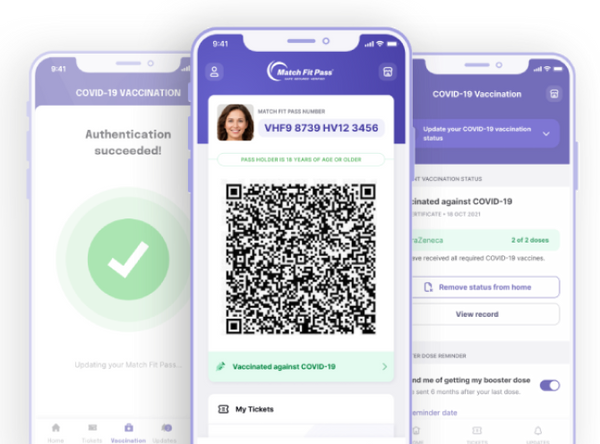
How Will Telemedicine Impact Healthcare: Future of the Telehealth Industry
 Daria Taranets
Daria TaranetsThe coronavirus pandemic has brought many challenges, one of which was the rapid change in the delivery of healthcare services to patients. Even though telemedicine has been around for years, it was COVID-19 that really started to move it from a niche market to the mainstream. It has reshaped healthcare and changed our perception of remote medical services.
In this article, we'll take a look at what telehealth means for the future of healthcare. Discuss which factors will support the increased use of telehealth in the future. Plus go through statistics of telehealth industry to get an understanding of the current market state.
How Telehealth Has Changed Healthcare Industry: Statistics and Size Market
With the ubiquitous globalization and rise of Internet adoption in remote areas, telemedicine is projected to become the new driving force for the healthcare industry. According to the Grand view research report in 2022, the telehealth industry size was estimated at $83.5 billion and is expected to grow with a CAGR of 24% from 2023 to 2030.
The growth of the telehealth market was heavily fueled by COVID-19, traveling restrictions, and in-person visits to hospitals being reduced to a minimum. This has forced many patients all around the world to switch to online appointments with doctors and to access healthcare services via telehealth tools.
Which Factors Will Support the Increased Use of Telehealth in the Future
What is the future of telehealth and how will telemedicine impact the future of healthcare, are two important questions. To better understand the questions, it is first necessary to examine the four factors that are driving the changes in the industry.
1. Increased Internet access
Even though many of us take the Internet for granted, in many regions, people have limited access to it or no access at all. As of 2021, according to ITU, there are still 2.9 billion people worldwide who have never used the Internet. While this number may seem a bit overwhelming, the number of Internet users steadily increased from 4.1 billion in 2019 to 4.9 billion in 2021. From the healthcare perspective, this statistic implies that more and more people will be able to get access to the benefits of telehealth.
2. Medical workforce shortage
One of the main factors that shape the future of telehealth is the shortage of labor resources in the healthcare industry. According to the projections, the global demand for healthcare professionals will increase to 80 million by 2030, pushing the workforce shortage to 15 million. This means that the number of healthcare providers struggling to fill this gap will continue to grow. The only way to cope with this challenge is to integrate digital technologies that will help to keep the quality of healthcare service high regardless of potential labor shortages.
3. Adoption of wearables
The growing popularity of wellness products, combined with the development of Remote Patient Monitoring (RPM) systems will lead to an increase in the adoption of wearable devices. On one hand, these technologies will be in high demand in senior residential communities. On the other hand, wearables will become a permanent part of our daily lives, finding their place on uniform and as part of our daily clothing — for 24/7 tracking of vital medical data.
4. Growth of services to be delivered remotely
While some might think that each and every service can be delivered online or with the help of digital tools today, that is not actually the case for healthcare. Some obvious reasons, like the complexity of medical examinations or the patient's condition make remote services difficult. There are also many cases where legislative restrictions or technology gaps mean medical services cannot be delivered remotely. While the former is subject to change, as demonstrated by the relaxation of some telehealth regulations during COVID-19, the latter will take a bit more time.
Telehealth Industry Trends and Challenges
Here are some trends and challenges that will shape the future of telehealth nursing and remote medical care.
Telemedicine: the cost-effective future of healthcare and most prominent trends
1. Further adoption of virtual care
The future of telemedicine is inextricably connected with physical hospitals and other medical institutions. The sooner such institutions adopt instruments of virtual care — and incorporate them into their, the sooner telehealth will integrate into the traditional healthcare system and become a new norm for society.
2. Expansion through advocacy
As the coronavirus pandemic has shown us, there is not enough awareness of digital technologies among the general public. This, in turn, fueled the mistrust and resistance to adopting digital initiatives aimed at mitigating the consequences of COVID-19. Basically, because users weren't informed well enough about how their data would be processed by the digital solutions being offered.
The advocacy and popularization of telehealth is a complex process though, which requires multiple parties to be involved. On one hand, the developers of telehealth solutions should share more information about their product with the audience, especially those that clarify data usage and security policies. On the other hand, governments on par with healthcare institutions should educate the public on the use of telehealth by conducting research studies, holding seminars, workshops, etc.
3. Improvement of telehealth products
Further augmentation of telehealth applications with AI, ML, and Blockchain technologies will definitely add to the telehealth growth projections. Algorithms that would allow doctors to detect certain trends in a patient's state and predict changes in the short-term perspective will be in high demand.
At the macro level, such improvements would allow healthcare professionals to analyze the health of the population as a whole and draw conclusions from the information that they receive with the help of telehealth tools.
4. Innovative RPM equipment
Yet another advancement that awaits telehealth in the future is directly connected with RPM systems. RPMs consist of wearables and smart medical devices such as Bluetooth blood pressure cuffs, heart rate monitors and other devices. These systems collect and transmit information about a patient's state to their phones or desktops, and on to their healthcare professional.
RPM systems allow patients to make fewer trips to a doctor as they can now receive the patient's medical data in real-time. Another advantage for healthcare professionals is that they now get to see all the information in one place without the need to go through disparate sources looking for a particular indicator.

Healthcare transformation: the future of telemedicine and its challenges
1. Privacy concerns
The healthcare industry has always been one of the major targets for cybercriminals, and the coronavirus pandemic has put it even higher in the 'ranking list' for attackers. No wonder that many people became skeptical about contact-tracing apps when they came out. Possible ways of mitigating the challenges of cybersecurity in telehealth industry are:
- making telehealth solutions compliant with up-to-date security standards and regulatory requirements;
- keeping patients aware of how their data is being processed;
- highlighting the benefits of telehealth to increase awareness about this technology.
2. Incomplete diagnosis
The quality of diagnosis that is provided during a telehealth visit has a lot to do with 1) the information that the patient provides to a doctor and 2) the communication tools that the patient uses. For example, the quality of a camera used for visual exams during live consultations. If a patient fails to provide some information or the quality of a video is poor, the chances of making an inaccurate diagnosis greatly increase.
Another issue is that even though telehealth works great for delivering basic medical and mental care, in some situations it is only on the in-person examination that the healthcare professional can diagnose the disease or ailment correctly.
3. Limited insurance coverage
It's important to note that presently some types of services delivered via telemedicine that are not covered by the insurance providers. This is one of the main problems when considering the future of telehealth reimbursement.
The fact that no insurance standards are set in that regard, and in many cases it's up to the insurance provider to decide which services to include in the insurance plan when it comes to telehealth.
For example, an insurance provider may refuse to cover a telemedicine service if it was delivered to a patient outside the walls of a medical facility (i.e. remotely, at their home).
4. Uncoordinated legislative regulations
As with insurance providers, due to the absence of unified legislative policies for the telehealth industry, each state or country decides how to regulate this field. There are such acts as HIPAA or FTC, though, telemedicine products are expected to follow by default. However, there may be a myriad of bureaucratic obstacles and differences in legislative definitions that force developers to fine-tune their products for each region individually.
For more information read in our article: 5 Legal and Regulatory Issues in Telemedicine: What You Need to Know.

Why Telemedicine Is the Future of the Healthcare Industry
The past few years have clearly shown us that telehealth is the future of medicine. Being isolated in their own homes during the pandemic, many people lost access to traditional healthcare and regardless of their initial preferences, opted for telehealth.
Despite all the potential drawbacks, telehealth has proven to be effective and demonstrated huge potential in terms of convenience, medical assessment, cost reduction, and flexibility. Drawing not only regular patients to this technology but also global enterprise companies. This all is just one great example of how telemedicine may be useful in the future.

Consider Lunka.tech Your Partner
WBA
A web extension that was developed by our team for Walgreens, the second-largest pharmacy store chain in the US. The client's idea behind this extension was to help website visitors pick the right vitamins quickly and without a hassle.
Lunka.tech came up with a survey and developed a supporting interface. Once that was done, we integrated the extension into the website's structure.
The WBA works as follows: based on the user's feedback regarding their symptoms and current feeling, the extension provides suggestions as to which vitamins would fit best the issues described. As of now, more than 10,000 unique users have come through WBA, and 30,000+ products offered via the extension.

Match Fit Pass
Quite a unique project that was developed by our team for a client from Manchester. Their idea was to create a product that would combine the functionality of a booking service and a telehealth app. The goal of the app, in general, was to improve the experience that visitors got while attending football matches in the UK during the coronavirus pandemic.
At the client's request, we developed Match Fit Pass. An app that allows users to buy tickets to sporting events of their interest, and at the same time order PCR-tests and vaccination documents directly through the app. We successfully completed this project and recived great feedback from the client.

Final Thoughts
The adoption of telemedicine tools in recent years has helped healthcare to make huge strides. All made possible by the development and use of new methods of medical service delivery that weren't considered before. In the near future we're sure to witness more telehealth industry trends that will set the new standards not only for this field but for the entire healthcare market. They're sure to help us better prepare for some future pandemics or lockdowns that may take place.
We hope that this article has helped to answer how telehealth is shaping the future of healthcare. If you are looking for more information on the telehealth impact on healthcare, or the telehealth future of healthcare, or simply need a software development partner for your new project, reach out to us via phone, email, or feedback form.
FAQ
Why has it taken the health industry so long to incorporate telehealth?
The healthcare market is known for being slow to adopt new technologies. So for a long time this was one of the major factors stopping industry from adopting telehealth technologies. Other challenges were the limited access to the Internet and a lack of digital skills (as the result of low digital awareness).
How does telemedicine reduce costs?
Compared to traditional healthcare, telemedicine is much more affordable. It allows medical facilities to get rid of tons of paperwork and eliminates the need for the patients to travel to a hospital every time they need to consult a doctor. Aside from that, according to HealthAffairs, in the US the average telehealth visit costs a patient around $79, about 1/4 of the cost of an in-person visit to a doctor.
What are the main benefits of using telemedicine in healthcare?
Among the most prominent advantages of telehealth are convenience, easier and faster access to basic medical care (especially in rural areas), the ability to get an appointment on the same day, 24/7 support, no travel expenses, and lower costs in general.
How has telemedicine improved healthcare?
When it comes to the impact that telehealth has made on healthcare, we need to mention improved medication management, reduced costs, and increased access to basic medical care for elderly people and those patients who face various barriers, such as distance, transportation, etc.

